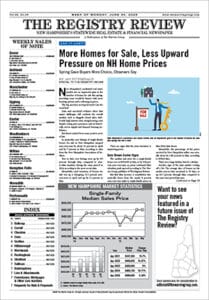
The banks may need to continue offering higher yields to maintain deposits at least through the first half, analysts at S&P Global Ratings say. iStock illustration
Community banks in the Northeast are the most pessimistic about the economy of anywhere in the nation, according to a new survey.
Based on the fourth quarter 2023 Community Bank Sentiment Index (CBSI) released by the Conference of State Bank Supervisors (CSBS), the sentiment of community bankers in the Northeast translated to 83 points, a 15-point increase from the 68-point reading last quarter, but still below 100 points that represents a neutral view of the economy.
Among all the regions of the United States, Northeast-based bankers are the most pessimistic compared to the other four regions where the CSBS index read between 90 and 94 points. Overall, community banks in the whole country recorded 92 points on the CSBS index, which is higher than 86 points a quarter ago.
Northeast-based bankers shared that their view of monetary policy and business conditions improved, as the Federal Reserve hinted that it is done raising its benchmark interest rate and may cut rates three times this year.
But they maintain a negative attitude toward regulatory burdens and profitability as banks still face margin pressures on all sides: dwindling deposits, slower lending on high-interest rates and new regulations that can be costly to implement.
“While it is encouraging to see the CBSI improve even slightly, rapidly rising interest rates that started in early 2022—while necessary to combat rising inflationary pressures—have stressed net interest margins, liquidity, securities valuations, loan demand, and credit quality,” CSBS Chief Economist Tom Siems said in a statement.
The survey noted that fewer community bankers (81 percent) believe the U.S. economy is at the start of, or already in, a recession. The percentage is down from 87 percent last quarter.
(sub)Forecast: Banks Will Still Perform Well
Meanwhile, a new report from S&P Global Ratings expects that larger American banks will still perform well this year and build capital as they face a slowed economy and tighter regulatory landscape in 2024.
In its 2024 U.S. bank outlook report, S&P said lenders may experience further declines in deposits, funding cost pressures, unrealized losses, commercial real estate exposures and economic uncertainty.
“With the Fed holding rates flat before pivoting to rate cuts sometime in mid-2024, we expect banks to see deposits decline only modestly and likely funding costs level off in the first half of the year,” S&P said in the report.
The banks may need to continue offering higher yields to maintain deposits at least through the first half, it added.
The report also noted that banks’ profitability will dip but still remain in good shape, and banks will build capital as regulators revised bank capital requirements through the Basel III Endgame.
“While net interest income may decline in 2024, we expect banks to generate a return on common equity of 10 percent to 11 percent and to build capital through earnings retention, particularly as they plan for more stringent capital regulation,” S&P said.
The report stated that commercial real estate charge-offs, delinquencies and criticized loans will likely rise due to weakness in the urban office sector which is a “small portion of banks’ CRE portfolios” and mostly concentrated at a subset of regional banks. Diversified loan portfolios and conservative underwriting should help mitigate bank losses, the report said.
Asset quality pressure will increase but remain manageable, the report predicted.
“Most asset quality measures have been normalizing. While we expect further weakening in 2024, we believe banks’ pre-provision earnings generally place them well to absorb the associated credit losses,” S&P said.
Unrealized losses on securities are still significant but will likely decline as the bank’s securities portfolios mature, it added.
S&P estimated that the US gross domestic product growth will be at 1.5 percent this year, compared to the 2.4 percent it forecasted for the whole year of 2023.
The 2024 outlook assessed regional and large regional banks, the biggest “money center” banks, and consumer-focused banks, among others. Regional banks with solid New Hampshire presences covered in the report include Citizens Bank, M&T Bank, JPMorgan Chase and Bank of America.

